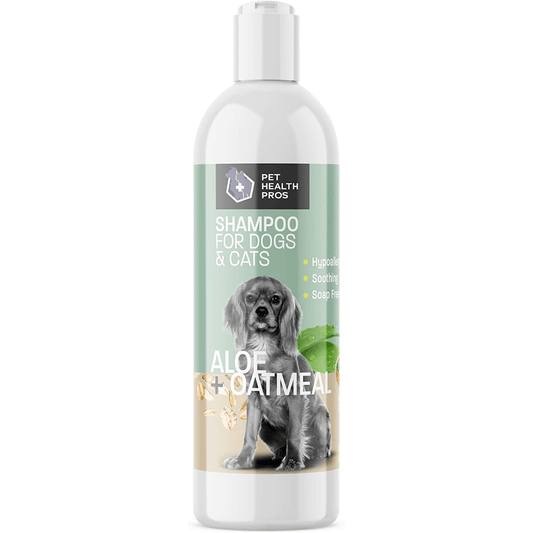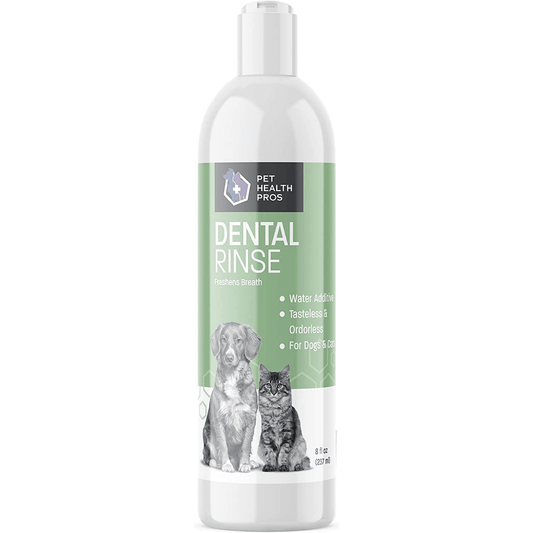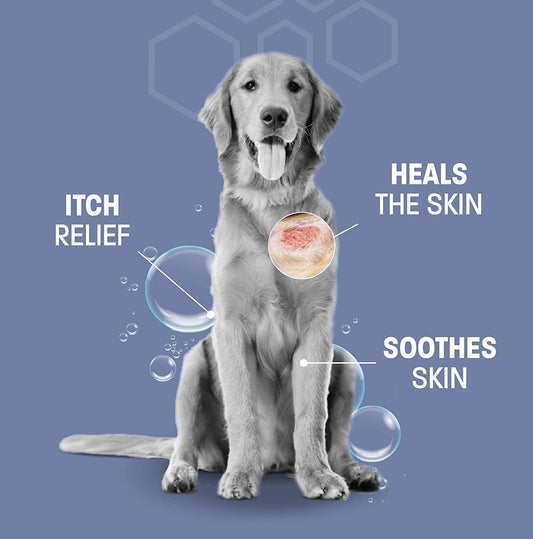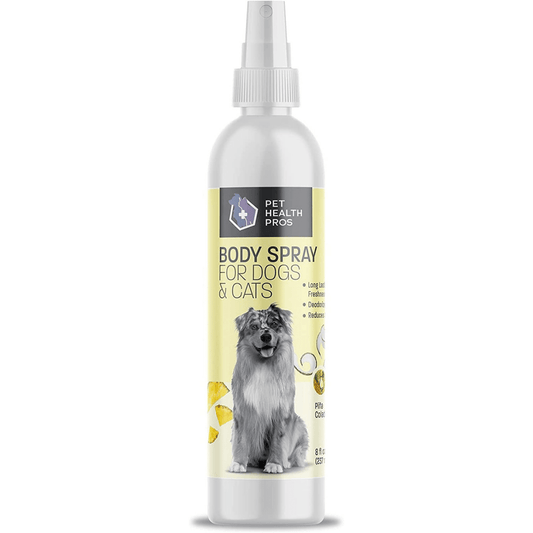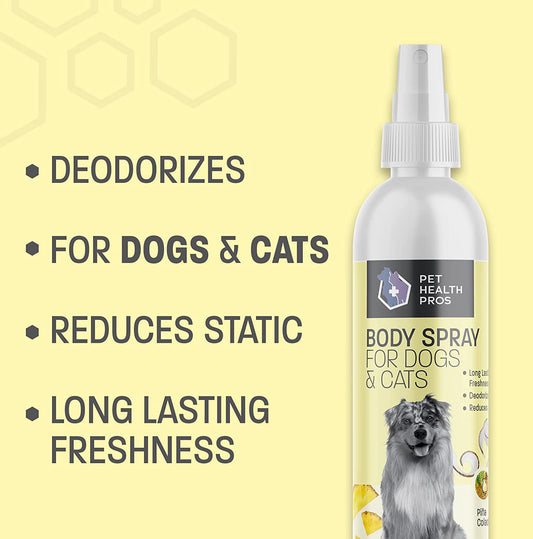If you're struggling with a dog that loves to chew on your furniture, you're not alone. Many pet owners face this issue, and finding a solution can be challenging. A homemade spray to keep dogs from chewing furniture can be a simple and effective way to protect your belongings. This article will guide you through understanding why dogs chew, how to create an effective spray, and additional training techniques to help curb this behavior.
Key Takeaways
- Understanding your dog's chewing habits can help you address the issue effectively.
- A homemade spray can be made with safe ingredients like vinegar and essential oils.
- Proper training techniques should accompany the use of the spray for the best results.
- Always monitor your pet's reaction to any new spray to ensure their safety.
- Providing alternative chew toys can help satisfy your dog's chewing needs.
Understanding Why Dogs Chew Furniture
Dogs often chew on furniture for various reasons, and understanding these can help pet owners address the behavior effectively. Here are some key factors:
Natural Instincts and Behaviors
- Chewing is a natural behavior for dogs, rooted in their instincts. It helps them explore their environment and can be a way to relieve stress.
- Puppies, in particular, have a strong urge to chew as they learn about their surroundings.
- Chewing can also be a way for dogs to keep their jaws strong and their teeth clean.
Teething and Dental Health
- Just like human babies, puppies go through a teething phase. This can lead to discomfort, prompting them to chew on various objects, including furniture.
- Chewing helps alleviate the pain associated with teething and promotes healthy dental hygiene.
- Providing appropriate chew toys can help redirect this behavior.
Boredom and Anxiety
- Dogs that are left alone for long periods may chew on furniture out of boredom or anxiety. This behavior can be a sign that they need more mental and physical stimulation.
- Signs of boredom include excessive barking, digging, and destructive chewing.
- Engaging your dog in regular play and exercise can help reduce these behaviors.
Understanding why dogs chew furniture is crucial for finding effective solutions. By addressing their needs, you can help prevent destructive chewing and promote a happier, healthier pet.
Ingredients for an Effective Homemade Spray
Essential Oils and Their Benefits
Using essential oils can be a great way to deter dogs from chewing on furniture. Some popular options include:
- Citrus oils (like lemon or orange) - Dogs generally dislike the smell.
- Peppermint oil - Its strong scent can be off-putting to pets.
- Lavender oil - While calming for humans, it can deter dogs from chewing.
Vinegar as a Deterrent
Vinegar is a common household item that can be used effectively in your spray. Its strong smell is unpleasant for dogs, making it a useful ingredient. Here’s how to use it:
- Mix equal parts of vinegar and water.
- Spray on furniture and other items you want to protect.
- Reapply as needed, especially after cleaning.
Safe Ingredients for Pets
When making your spray, it’s crucial to use safe ingredients. Here are some to consider:
- Water - The base for your spray.
- Apple cider vinegar - A pet-safe alternative to regular vinegar.
- Essential oils - Ensure they are safe for pets before use.
Always test a small area of your furniture before applying the spray widely. This helps avoid any damage to the surface.
By combining these ingredients, you can create an effective spray that helps protect your furniture from your dog's chewing habits. Remember to apply it consistently, especially in problem areas like furniture, shoes, and cords.
Step-by-Step Guide to Making the Spray
Gathering Necessary Materials
To create your homemade spray, you will need to gather a few simple materials. Here’s what you’ll need:
- Spray bottle (preferably glass or high-quality plastic)
- Water
- Vinegar (white or apple cider)
- Essential oils (like lemon or peppermint)
Mixing the Ingredients
Once you have your materials, it’s time to mix them together. Follow these steps:
- Start by filling the spray bottle halfway with water.
- Add an equal amount of vinegar to the bottle.
- Finally, add about 10-15 drops of your chosen essential oil. This will help create a scent that dogs dislike.
- Shake the bottle gently to mix all the ingredients well.
Proper Storage and Usage
After mixing, it’s important to store your spray correctly and use it effectively:
- Store the spray in a cool, dark place to maintain its effectiveness.
- Shake well before each use to ensure the ingredients are mixed.
- Spray on furniture and areas where your dog tends to chew, but avoid soaking the surfaces.
Remember: Always test a small area first to ensure the spray does not damage your furniture.
By following these steps, you can create an effective homemade spray to help deter your dog from chewing on furniture. This simple solution can be a great addition to your training efforts, especially when combined with positive reinforcement techniques. Using this spray can help protect your furniture while keeping your dog safe.
Training Techniques to Complement the Spray
Positive Reinforcement Methods
Using positive reinforcement is a great way to encourage good behavior in your dog. This means rewarding your dog when they choose not to chew on furniture. Here are some effective methods:
- Use treats: Give your dog a small treat when they play with their toys instead of chewing on furniture.
- Praise them: Verbal praise can be very motivating. Use a happy tone to let them know they did well.
- Playtime: Spend time playing with your dog to keep them engaged and distracted from chewing.
Redirecting Chewing Behavior
If you catch your dog in the act of chewing furniture, redirect their attention to something appropriate. Here are some strategies:
- Provide chew toys: Always have a variety of chew toys available for your dog.
- Use the spray: Apply the homemade spray on furniture to deter chewing.
- Engage in play: Distract your dog with a game or a walk when you see them starting to chew.
Consistency and Patience
Training your dog takes time and effort. Here are some tips to ensure success:
- Be consistent: Use the same commands and rewards every time.
- Stay patient: Understand that it may take time for your dog to learn.
- Monitor progress: Keep track of your dog’s behavior to see what works best.
Remember, training is a journey. It’s important to stay committed and adjust your techniques as needed.
By combining these training techniques with your homemade spray, you can effectively reduce your dog's urge to chew on furniture. This approach not only helps protect your belongings but also strengthens the bond between you and your pet.
Additionally, try to reduce anxiety through providing dog clothes, crate training, behavioral training, or even vet-approved medication.
Safety Precautions When Using Homemade Sprays
When creating and using homemade sprays to deter dogs from chewing furniture, it’s essential to prioritize safety. Here are some important precautions to consider:
Testing for Allergic Reactions
- Always test a small area of your dog's skin before applying the spray widely. This helps ensure that your pet does not have an allergic reaction to any of the ingredients.
- Monitor your dog for any signs of irritation or discomfort after the initial test.
- If any adverse reactions occur, discontinue use immediately.
Avoiding Harmful Substances
- Ensure that all ingredients are safe for pets. Avoid using any substances that are toxic to dogs, such as certain essential oils or chemicals.
- Refer to a reliable source to confirm the safety of each ingredient you plan to use.
- Keep the spray out of reach of pets and children to prevent accidental ingestion.
Monitoring Your Pet's Response
- After applying the spray, observe your dog's behavior closely. Look for any signs of distress or unusual reactions.
- If your dog seems overly stressed or agitated, consider adjusting the formula or seeking alternative solutions.
- Regularly check the furniture and areas where the spray is applied to ensure it remains effective without causing harm.
Using homemade sprays can be a safe and effective way to protect your furniture, but caution is key. Always prioritize your pet's health and well-being when trying new methods.
By following these safety precautions, you can help ensure that your homemade spray is both effective and safe for your furry friend. Remember, the goal is to create a harm-free environment while discouraging unwanted chewing behavior.
Additionally, consider the effectiveness of your spray by observing your dog's reactions and adjusting the formula as needed. This approach not only protects your furniture but also promotes a positive experience for your pet.
Alternative Solutions to Prevent Chewing
Providing Chew Toys
One of the best ways to keep your dog from chewing on furniture is to provide them with appropriate chew toys. These toys can satisfy their natural urge to chew and help keep them entertained. Here are some options:
- Rubber toys: Durable and can be filled with treats.
- Rawhide bones: Great for chewing, but monitor for safety.
- Interactive toys: Engage your dog mentally and physically.
Increasing Physical Activity
Regular exercise is crucial for your dog's well-being. A tired dog is less likely to chew on furniture. Consider these activities:
- Daily walks: Aim for at least 30 minutes.
- Play fetch: A fun way to burn off energy.
- Agility training: Stimulates both mind and body.
Creating a Stimulating Environment
A stimulating environment can help reduce boredom and anxiety, which often lead to chewing. Here are some ideas:
- Rotate toys: Keep things fresh by changing toys regularly.
- Puzzle feeders: Make mealtime a challenge.
- Training sessions: Teach new tricks to keep their mind engaged.
Keeping your dog engaged and active can significantly reduce unwanted chewing behaviors. Consider combining these methods with your homemade spray for the best results.
By implementing these strategies, you can help protect your furniture while ensuring your dog remains happy and healthy. Remember, patience and consistency are key!
Evaluating the Effectiveness of Your Approach
When it comes to keeping your furniture safe from your dog's chewing, it's important to assess how well your methods are working. Regular evaluation can help you identify what’s effective and what needs adjustment. Here are some key areas to focus on:
Observing Changes in Behavior
- Watch for signs of improvement: Is your dog chewing less? Are they showing interest in their toys instead?
- Note any triggers: Are there specific times or situations when chewing increases?
- Keep a journal: Document your dog's behavior changes over time to spot patterns.
Adjusting Techniques as Needed
- Modify your spray: If your homemade spray isn’t working, consider changing the ingredients or concentration.
- Incorporate training: Use positive reinforcement to encourage good behavior alongside the spray.
- Be flexible: If one method isn’t working, don’t hesitate to try another approach.
Seeking Professional Advice
- Consult a vet or trainer: If chewing persists, it may be a sign of underlying issues like anxiety or boredom.
- Consider behavioral therapy: A professional can provide tailored strategies to help your dog.
- Join support groups: Connecting with other pet owners can offer new insights and solutions.
Remember, addressing the root causes of chewing is essential. Combining your no-chew spray with behavioral solutions can lead to lasting results. By understanding your dog's needs and adjusting your approach, you can foster a positive relationship with your pet while protecting your furniture.
To truly know if your methods are working, you need to check their results. Take a moment to look at what you’ve done and see if it’s making a difference. If you want to learn more about how to improve your pet's health, visit our website for helpful tips and products!
Conclusion
In summary, creating a homemade spray to deter your dog from chewing on furniture can be a simple and effective solution. By using common ingredients like vinegar and citrus, you can make a spray that is safe for your pet and your home. Remember to test the spray on a small area first to ensure it won’t damage your furniture. Consistency is key; apply the spray regularly and combine it with positive reinforcement training to help your dog learn what is acceptable to chew. With patience and the right approach, you can protect your furniture while keeping your furry friend happy.
Frequently Asked Questions
Why do dogs chew on furniture?
Dogs chew on furniture for various reasons. They might be bored, anxious, or just following their natural instincts. Puppies also chew to relieve the discomfort of teething.
What ingredients should I use for a homemade spray?
You can use safe ingredients like vinegar, essential oils, and water. These ingredients can help deter your dog from chewing on furniture.
How do I make the homemade spray?
To make the spray, mix equal parts of vinegar and water, then add a few drops of pet-safe essential oils. Shake well and spray on the furniture.
Is the spray safe for my dog?
Yes, the ingredients in the spray are generally safe for dogs. However, you should always test a small area first and monitor your pet's reaction.
What if my dog still chews on furniture after using the spray?
If your dog continues to chew, consider using training techniques like redirecting their chewing to appropriate toys or providing more exercise and mental stimulation.
Can I use this spray on all types of furniture?
While the spray is safe for most furniture, avoid using it on delicate fabrics or surfaces that could be damaged by vinegar.


